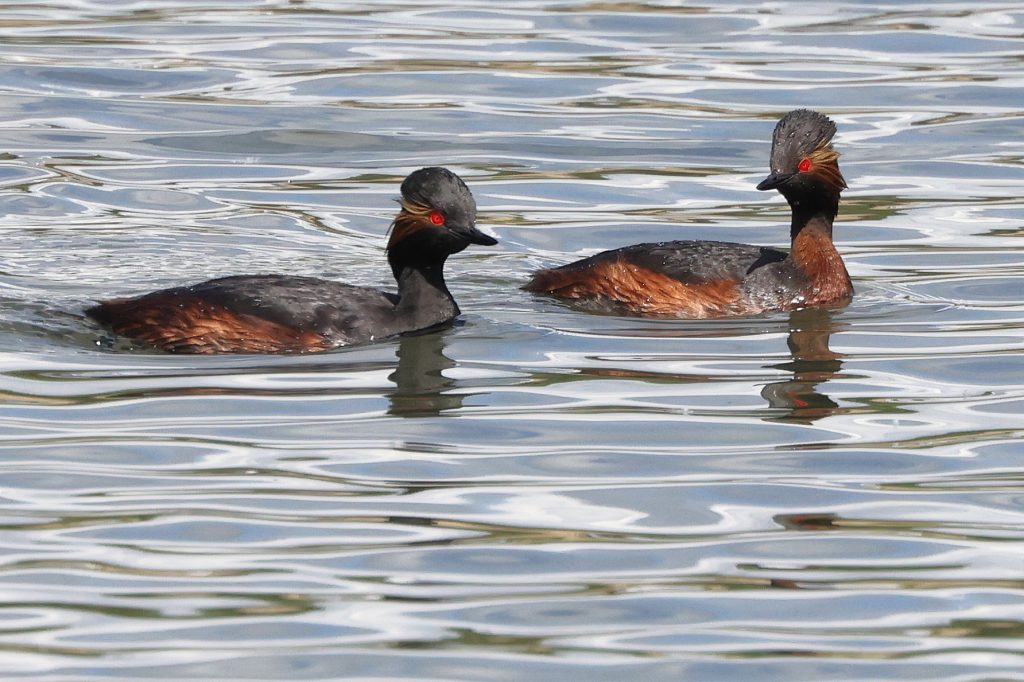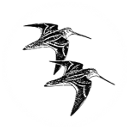Observations
May-June 2022 – Trouble afoot in the Gull and Tern Colony

This is the time of year when the Black-headed Gulls and Common Terns nest on our rafts, providing a constant din. However, problems were afoot this year.
Having counted a good number of nests of both species, these largely hatched successfully and the chicks seemed to be growing strongly. Then over a few days the whole colony seemed to be wiped out. What was the cause?
After ruling out other suspects for various reasons, the finger of suspicion seems to be pointing to Otters. There have been several sightings over this period, frequently picked up by trail cameras close by. Otters are known to be fond of young waterfowl as a change from all that fish….
Some gull chicks have survived on one of the islands, but only a fraction of the normal numbers.
So far, thank goodness, the severe epidemic of bird flu that is devastating so many of Britain’s seabird colonies has not had an impact on our gulls and waterfowl. We are keeping our fingers crossed.
Best waterfowl of the period was probably the pair of Black-necked Grebes that arrived, boosted hopes of another breeding attempt, and promptly departed again. Curiously the female had a ruddy tinge to the lower neck, but clearly wasn’t a Red-necked Grebe!
Meanwhile the South Lagoons is hosting this year’s non-breeding Mute Swan herd, which peaked at 57 birds. There were up to eight Shovelers, and the RSPB trailcam picked up a brood of six in the Toll House Stream, nice to have breeding confirmed.
Gadwalls seem to have had a good season with a count across the site of 388, and another of 372 just in the North Lagoons alone. Peak Pochard count was 34, and two pairs of Red-crested Pochards seem to have somehow acquired one brood of three Red-crested Pochard and two Pochard ducklings. Finally the max count of Tufted Ducks was 156.
There were up to six – but more typically two to four – Little Ringed Plovers, but sadly they don’t seem to have been successful in breeding. Two Dunlins appeared, always nice to see at an inland site. Common Sandpipers on two early May dates were presumably spring passage birds, but the three Green Sandpipers at the end of June probably represented the first returning wintering birds. Autumn passage has already begun!
Up to four Cuckoos were seen throughout, and with juveniles already seen, caught and ringed, they are having a successful breeding season. Tawny Owl was recorded just twice, but with two pairs having bred on site, that just reflects the absence of observers at Tawny Owl active periods.
All three regular falcons were present: one or two Kestrels (they bred successfully in the South Lagoons), up to five Hobbies and single Peregrines on seven dates. One or more Ravens were recorded on seven dates, and the site record of four was matched again. There seem to be a couple of pairs close by.
Spring maximum for Swift was 40, for Swallow and House Martin both it was 20, but only a single Sand Martin was recorded in the period. The usual Warblers were present in generally usual numbers. Sadly there was just a single record of Willow Warbler, singing in the RSPB garden just for one day. Grasshopper Warblers were heard singing (usually the only way they get onto our records) sporadically through the period. Just two Lesser Whitethroat records though. And finally, there was just a single spring passage record of Yellow Wagtail.
